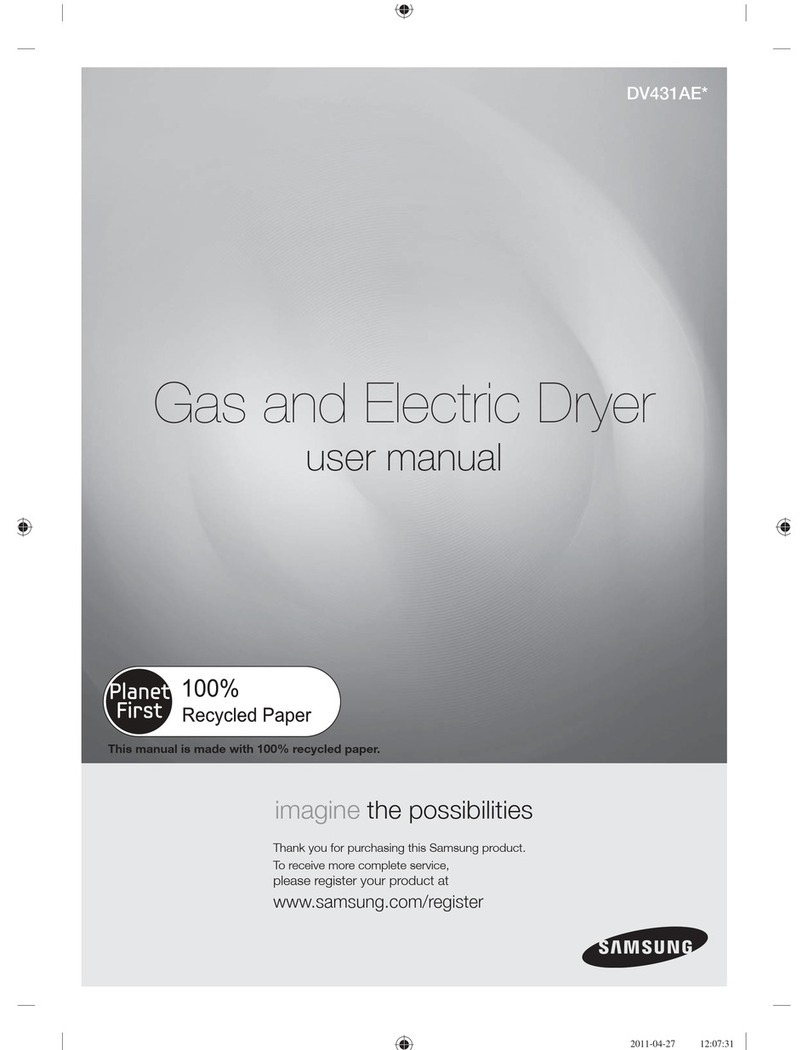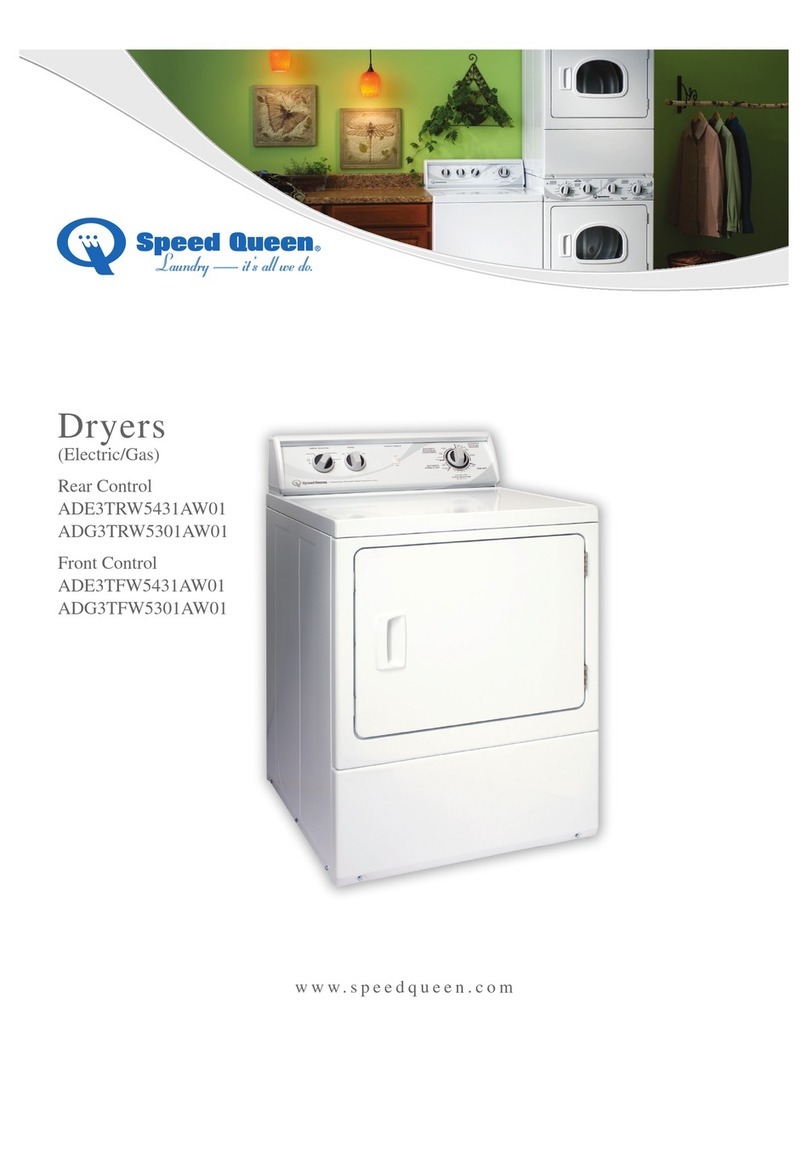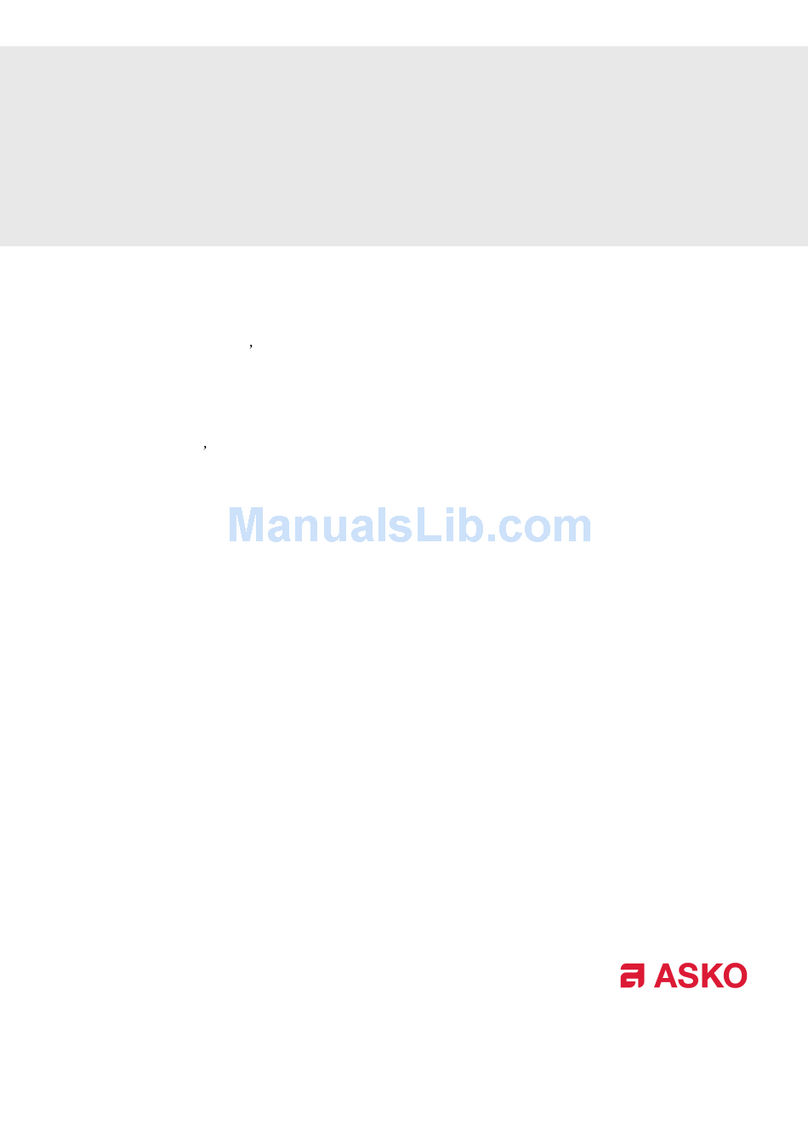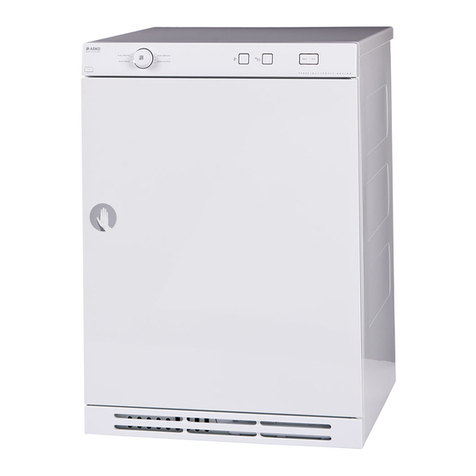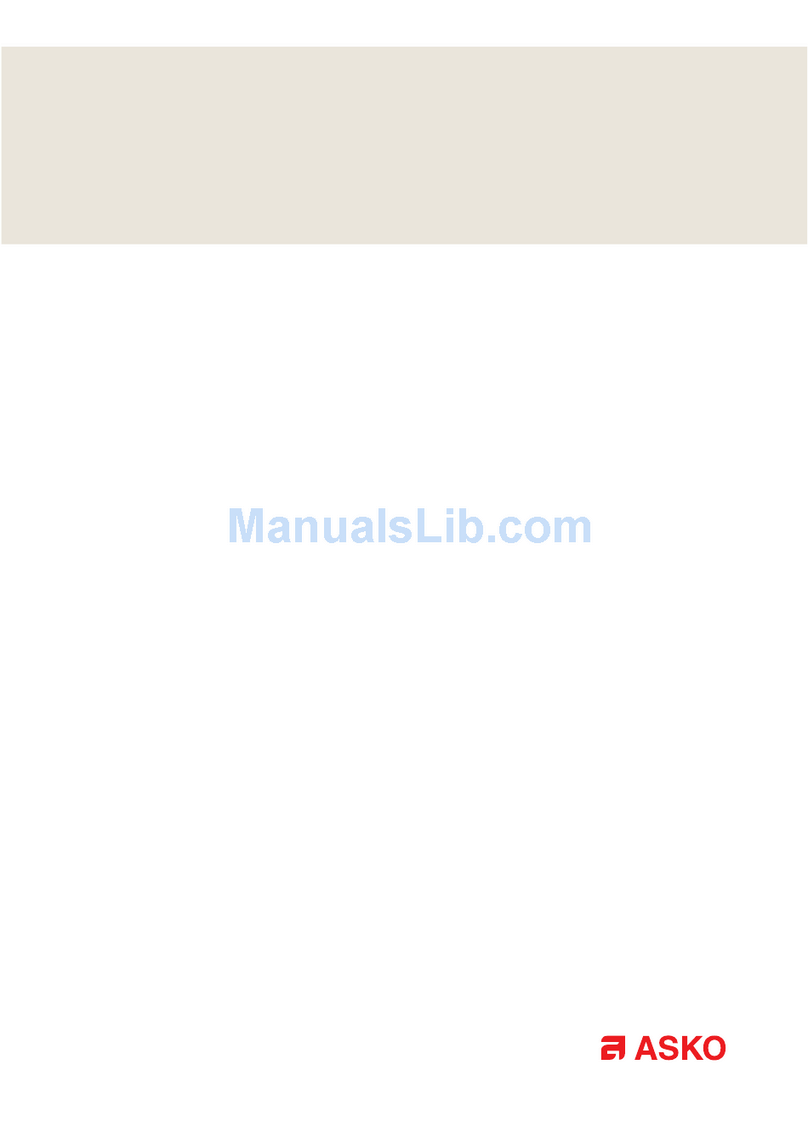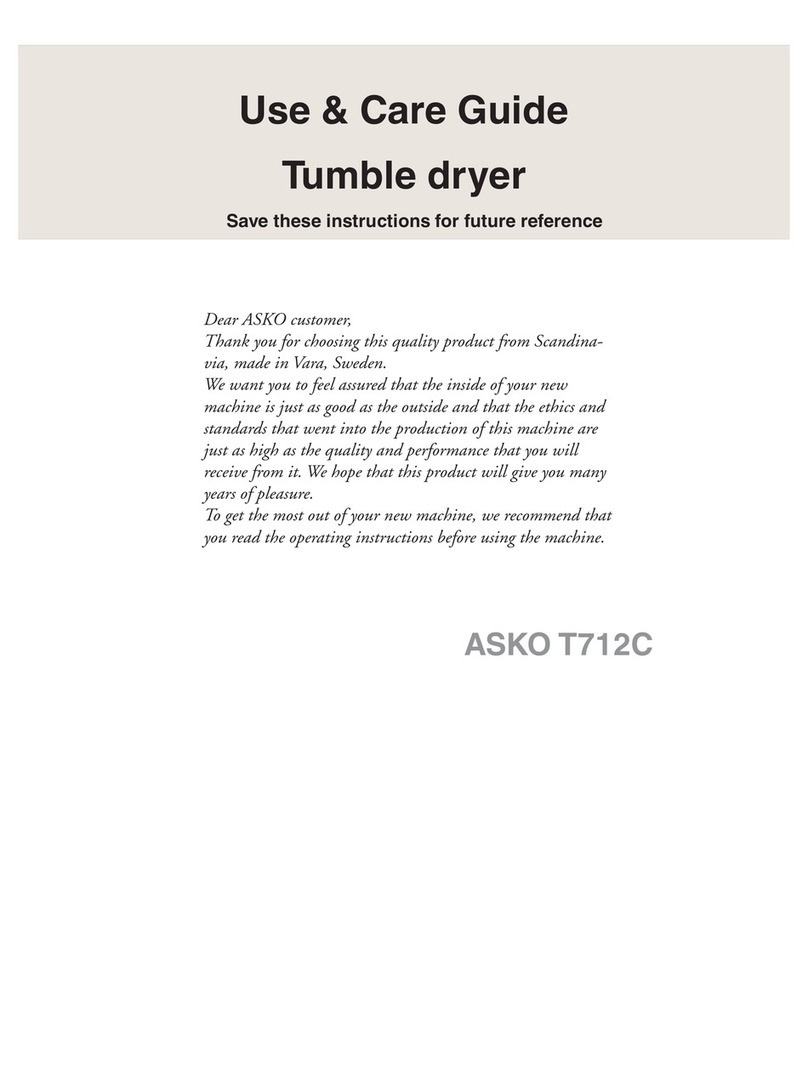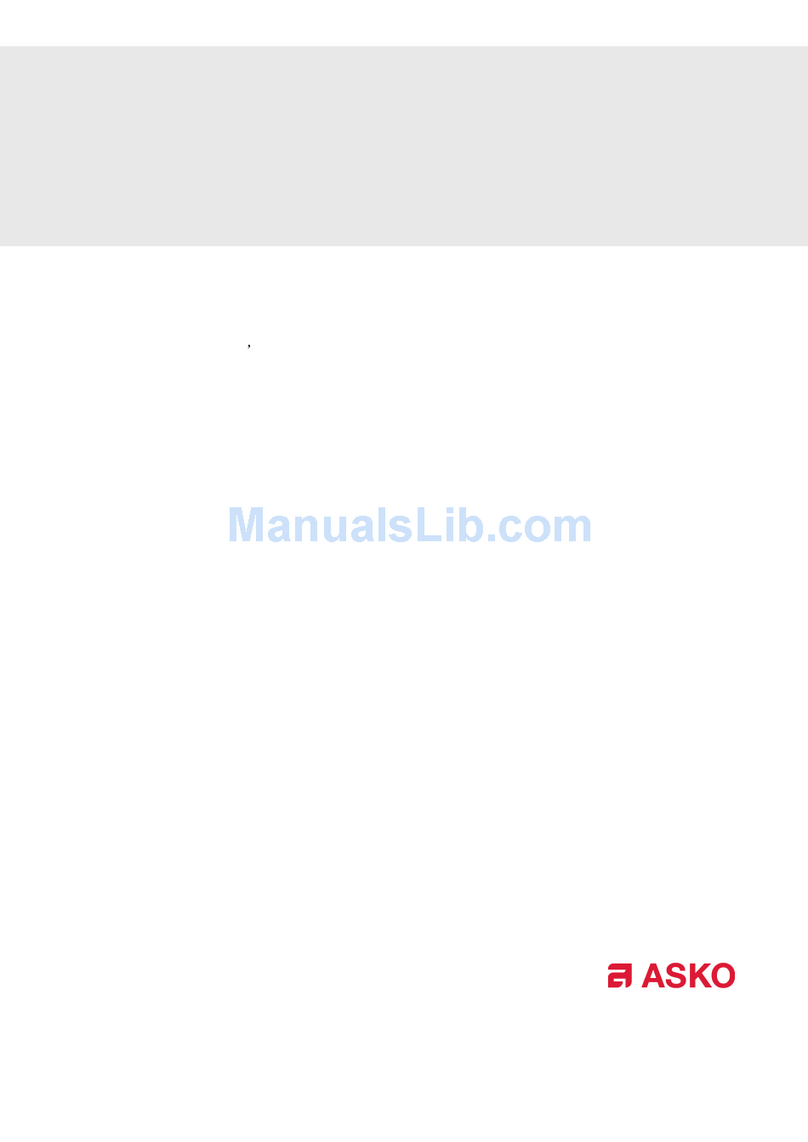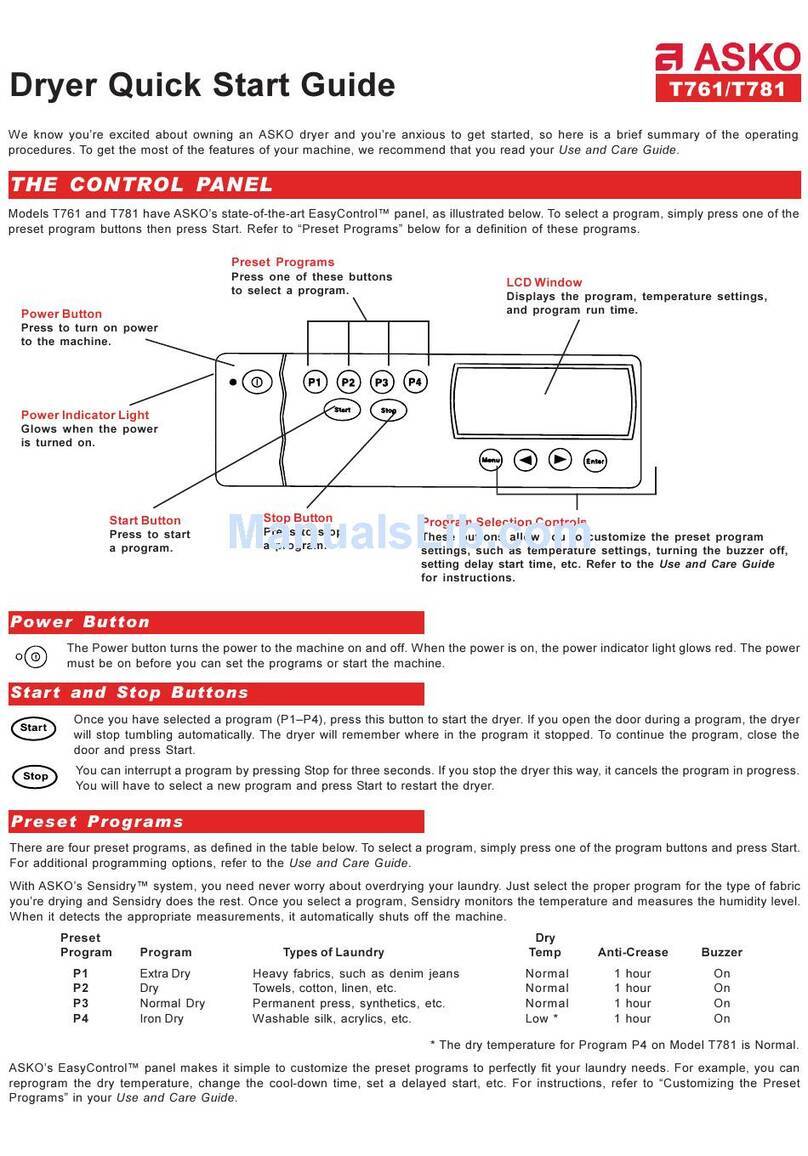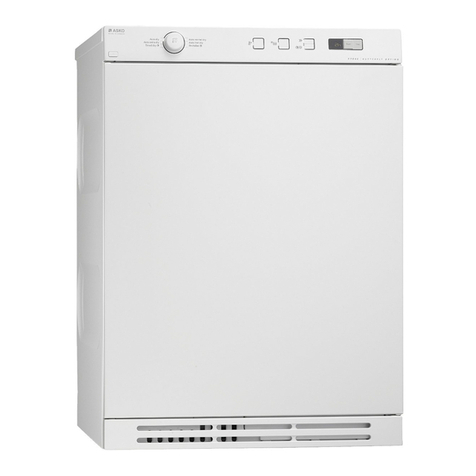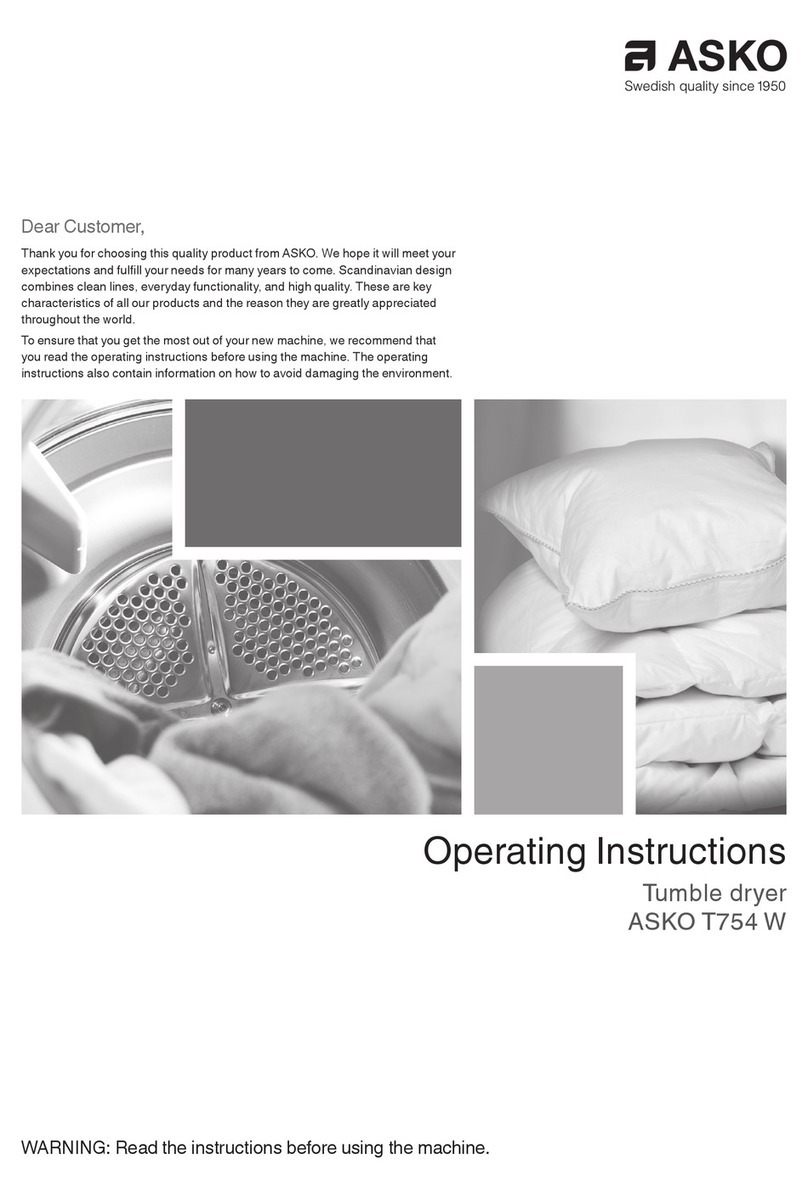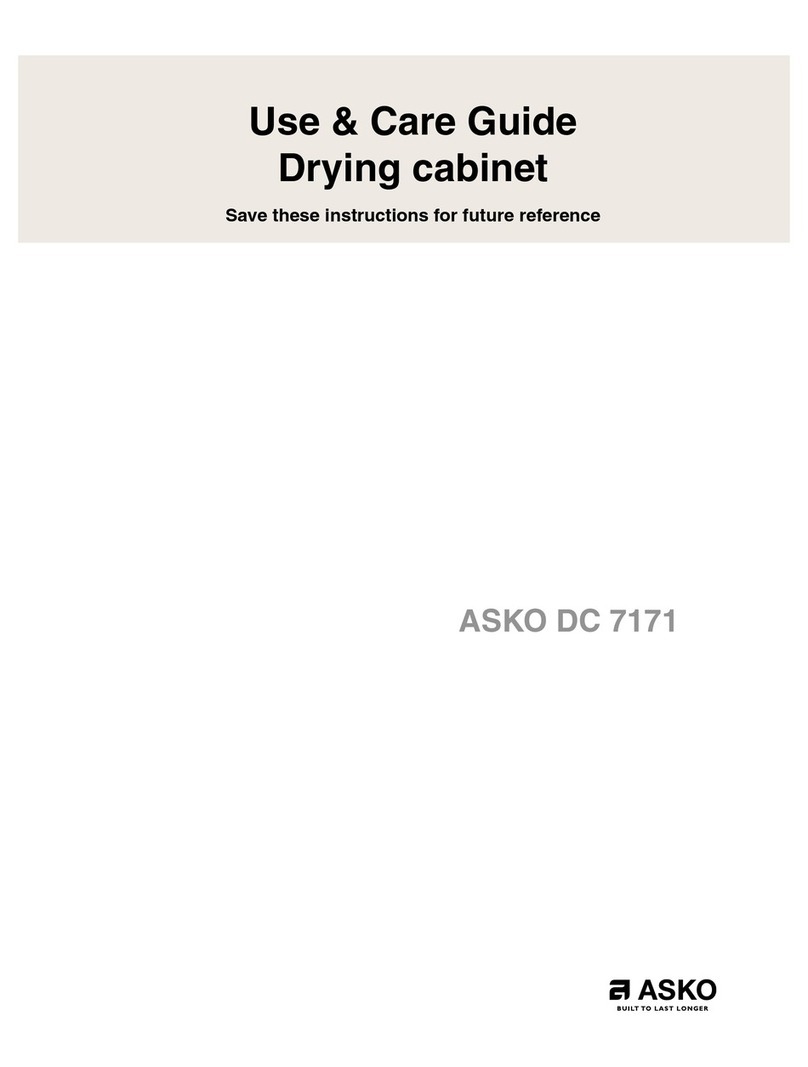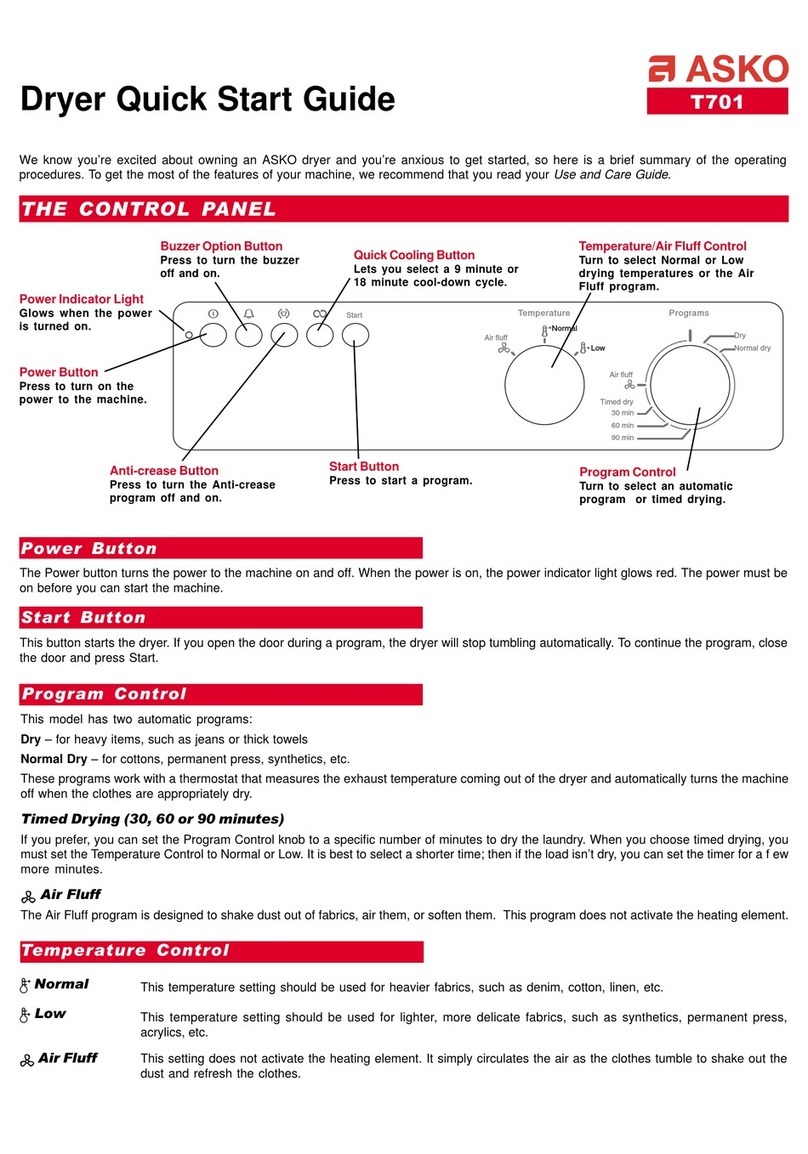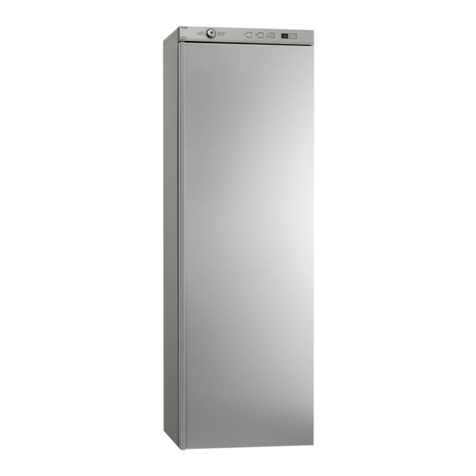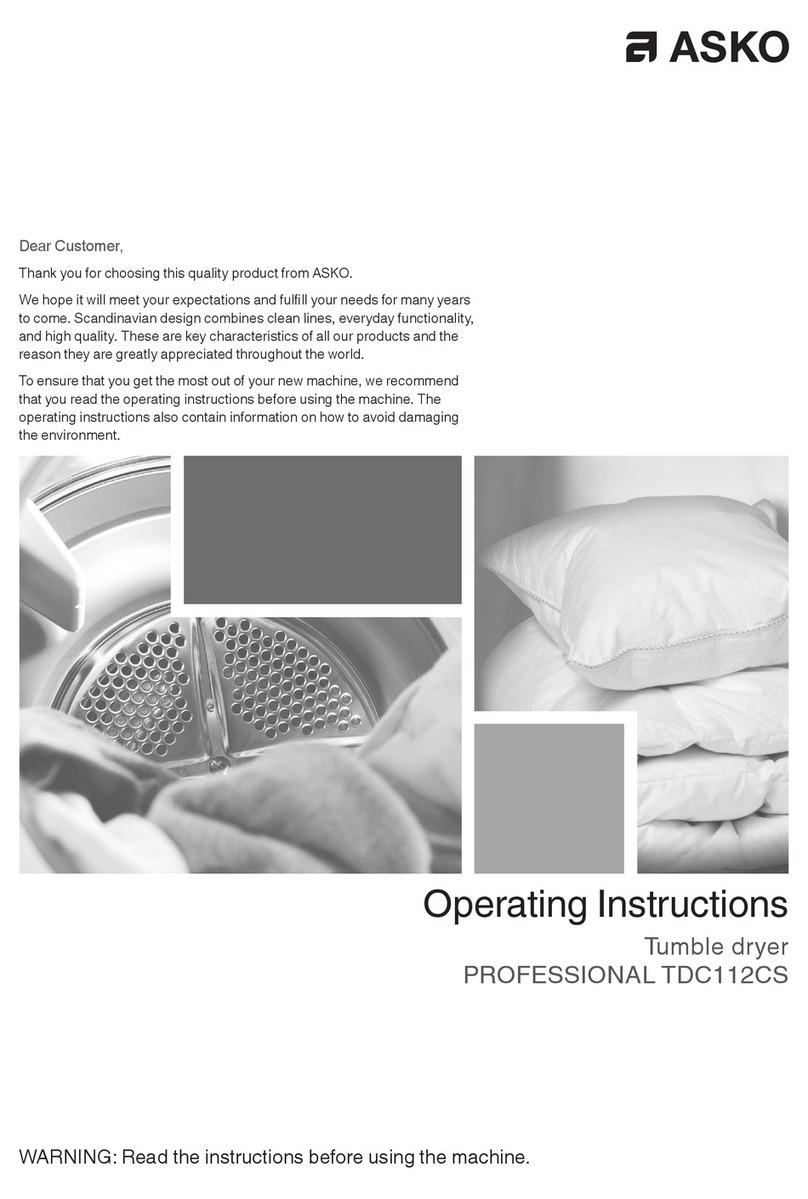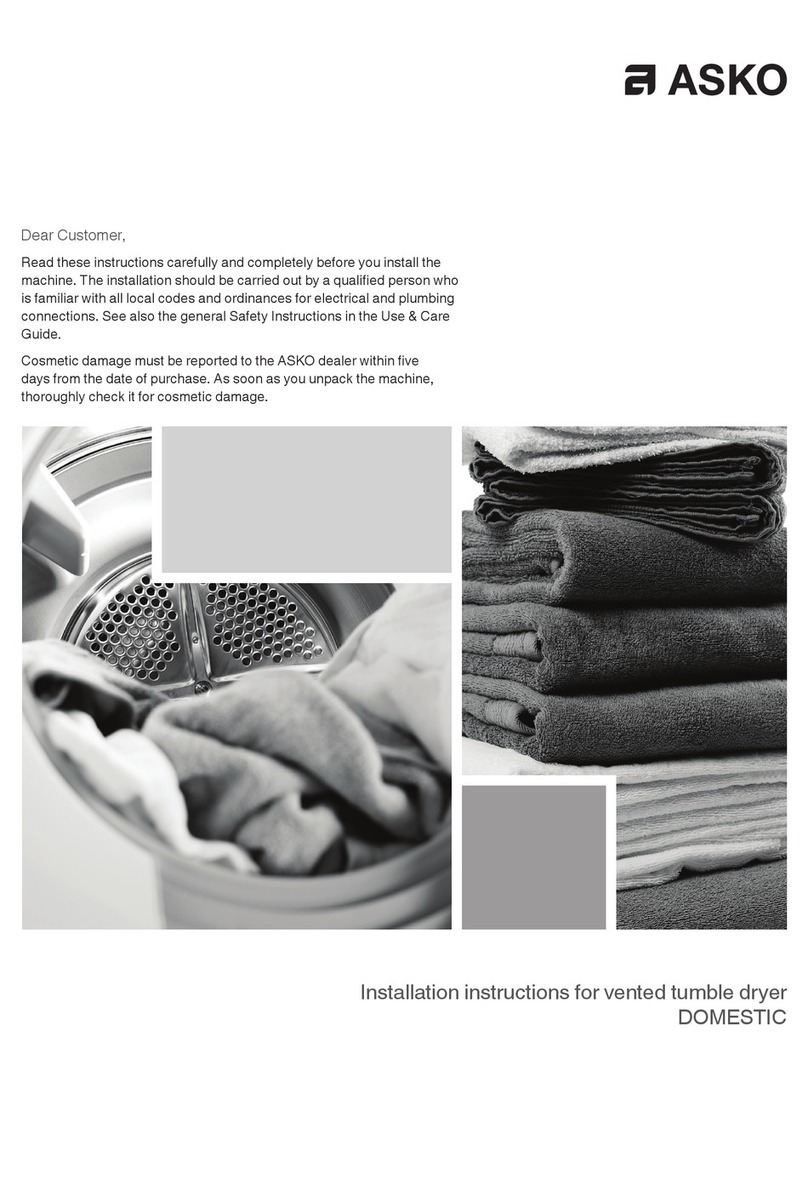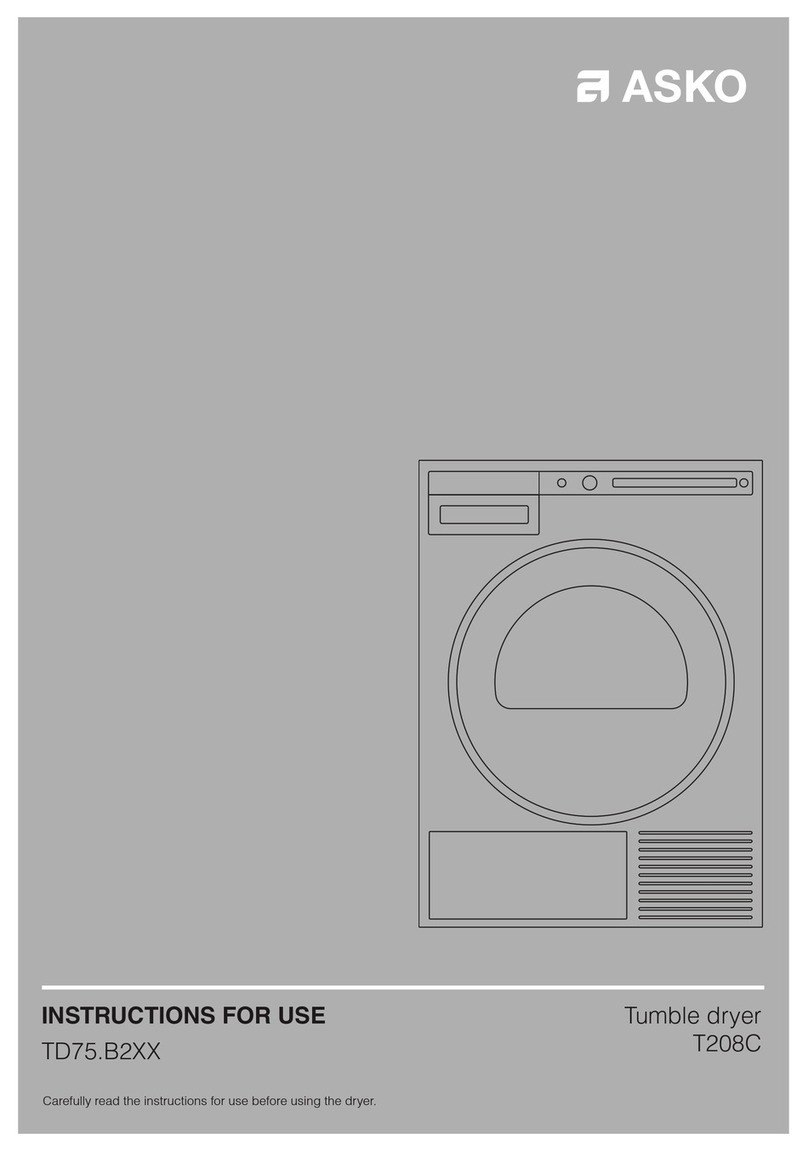
4
Read the operating instructions and
keep them in a safe place!
• Electrical installation, if required,
should be carried out by a qualified
electrician.
• The machine should only be used for
tumble-drying as described in these
instructions.
• Repairs and maintenance relating to
safety or performance must be carried
out by a qualified professional.
• Damaged mains cables must only be
replaced by a qualified electrician.
• Sufficient ventilation is required to
prevent smoke from open fires or
fumes from equipment burning other
fuels being sucked into the room
when the tumble dryer is running.
• Do not dry dirty laundry in the tumble
dryer.
• Items that are stained with e.g.
cooking oil, acetone, alcohol,
petrol, kerosene, stain remover,
turpentine, wax and wax remover
should be washed in hot water with
extra detergent before they go in the
tumbler dryer.
• Items such as foam rubber, latex,
plastic, waterproof textiles, rubber-
coated items and clothes and foam-
rubber filled cushions must not be
dried in the tumbler dryer.
• Fabric softener or similar products
should be used as per the
recommendations of the detergent
manufacturer.
• The machine is not designed to be
used by persons (even children)
that are physically or mentally
handicapped or lack experience
and knowledge. Such persons must
receive instruction in how to use the
machine from the person responsible
for their safety.
• Children must be watched to ensure
they do not play with the machine.
Safety
• The machine must not be used for
drying items that have been dry-
cleaned at home or fabrics that may
contain residues of flammable liquids.
• The tumble dryer is not to be used if
industrial chemicals have been used
for cleaning
• A float shuts offthe machine in the
event of a blockage in the condensed
water hose or if there is a risk of
the condensed water container
overflowing.
WARNING!
When the tumble dryer is operating, the
back of the tumble dryer will get very hot.
Leave the machine to cool completely
before touching the back.
Safety instructions










